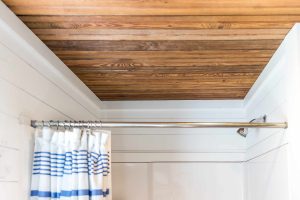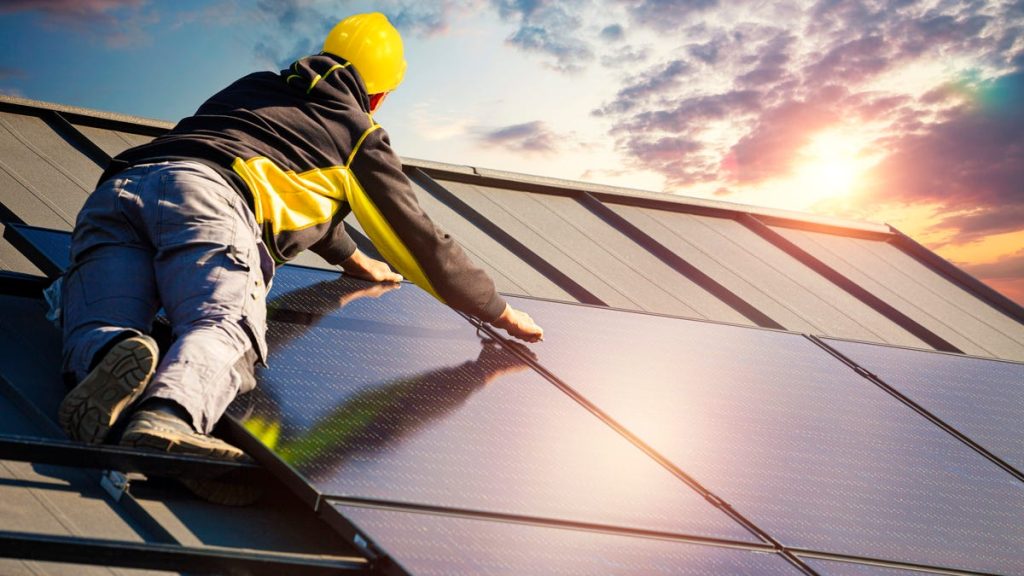Despite a big federal tax credit, solar panels cost a lot of money. A typical solar panel system can cost $30,000 or more, meaning even with 30% off you’re on the hook for more than $20,000.
Where do you get the money?
There are a lot of options. Your solar installer probably has a financing option tailored toward solar panels, but you don’t have to go that route. You can use other types of loans, including home equity loans and lines of credit (HELOCs), and might find a better deal.
Can solar panels save you money?
Interested in understanding the impact solar can have on your home? Enter some basic information below, and we’ll instantly provide a free estimate of your energy savings.
“We divide the conversation into two parts,” Brian Walsh, a certified financial planner and senior manager of financial planning at SoFi, told CNET. “Does it make sense for you to go with solar panels? If you’re going to go with solar panels, what’s the most cost-effective way for you to pay for those?”
Home equity loans and HELOCs are commonly used to pay for home improvement projects, and solar panels are a clear example of a home improvement, said Vikram Gupta, executive vice president and head of home equity at PNC Bank. One advantage: Having a HELOC in place ahead of time means you can compare interest rates and terms on the spot.
“Same with any other large purchase, make sure your financing options are in place before you go shopping, so you can do comparison shopping,” Gupta told CNET.
Here’s what to consider before tapping your home equity for solar panels.
What is a home equity loan?
Let’s start by explaining home equity. It’s the difference between what your home is worth and what you owe on your mortgage and any other loans secured by your home. If your home is worth $300,000, and you have $200,000 left on your mortgage, you have $100,000 in home equity.
With a home equity loan, you borrow money from the bank, secured by that home equity. That means the lender can foreclose on your home if you fail to repay. But it also means there’s less risk for the lender that they’ll lose money on the deal — and that often means a lower interest rate and better terms.
Home equity loans are typically lump sum, upfront loans. So with a $50,000 home equity loan, you’ll get $50,000 now and have payments for, say, 10 or 15 years to pay it back. They usually have a fixed interest rate, meaning your rate won’t change and your payments will stay the same.
What is a HELOC?
A HELOC is a bit different. Instead of getting a lump sum up front, you get a line of credit. Think of it like a credit card, but with a lower interest rate and somewhat different terms. You don’t have to take all the money out at once, and you only pay interest on what you actually borrow. Interest rates are usually variable, meaning they’ll rise and fall with the market (typically in line with what the Federal Reserve does).
So if you have a $50,000 HELOC, you have a standing ability to borrow money to pay for your solar panels, and you’ll know the interest rate ahead of time. Many lenders also allow you to lock your interest rate for a certain balance, effectively turning it into a fixed-rate loan.
Pros of using a home equity loan or HELOC to finance your solar panels
Compared to unsecured loans like personal loans, home equity borrowing tends to have lower interest rates and longer terms. That means smaller monthly payments.
“If you own your home and you happen to have excess equity in your house, the home equity is most likely the most economical way to access funds,” Gupta said.
Here are some advantages of tapping your home equity for solar panels:
- Lower interest rates: Secured loans tend to be more affordable than unsecured loans. That can add up quickly if you’re borrowing tens of thousands of dollars and paying it back over several years.
- Knowing in advance: You don’t have to wait until you’ve picked a solar installer to get a HELOC. You can get a line of credit and not borrow any money until you’re ready. That way you can comparison shop immediately when you see an offer for other financing methods.
- Tax deductible interest: The interest on a home equity loan or HELOC is tax deductible if the money is used for a home improvement project.
Cons of using a home equity loan or HELOC to finance your solar panels
Home equity loans and HELOCs are not without risk. Because you’re staking this loan on your home, make sure you’re easily able to afford the payments and not close to maxing out your home equity.
- Risk of foreclosure: Like a mortgage, home equity loans and HELOCs put your home at risk. Make sure you can fully repay to avoid having to foreclose.
- Trouble when you sell: If you have a lot of debt against your home’s value and you decide to sell, you run the risk of selling for less than you owe on your mortgage and loans. If you plan on selling your home soon, keep that in mind.
- Complicated approval process: Lenders go through a fairly extensive process to approve homeowners for home equity loans. You’ll have to get an appraisal, which takes more time. So you might not be able to get one if you wait until the last minute.
Solar panels should pay for themselves eventually, but how you choose to finance them will play a large part in determining how long that takes.
Alternative solar financing options
You have a lot of options for how to pay for solar panels, and tapping your home equity is just one. Here are a few others:
Cash purchase
If you’ve got tens of thousands of dollars lying around, that’s the easiest way to pay for solar panels. That often requires saving up for this big purchase. “In a perfect world, this is something that you’ve been saving up for and you have extra cash set aside and you don’t even have to borrow the money,” Walsh said.
If you’re not ready to get solar panels for a few years, consider putting money away now in a high-yield savings account so you don’t have to borrow as much later.
Benefits
- No financing costs
- No interest
- No need to wait for loan approval or a credit check
Drawbacks
- You have to have a lot of cash on hand
- You risk draining your reserves all at once
- Often requires planning and saving years in advance
Solar loan
Your solar installer will probably offer you options for financing, typically through a financial institution the installer partners with. These loans might be secured by the solar panels themselves, and can come with a wide variety of rates and terms.
Getting your financing directly from the installer might save you the hassle of shopping around for a loan, but keep an eye on the rates and fees. “If that solar panel company is also providing financing, it’s part of a seamless transaction, and hence at the end of a purchase transaction, there’s a lot of benefits to saying let me just stick to the company I’m buying the product from,” Gupta said.
Benefits
- It’s all coming from one company in one transaction
- The loan is designed specifically for solar panels
- You don’t have to visit a bank or work with a separate lender
Drawbacks
- Limited ability to shop around
- You may get better terms with a different type of loan
- Offers vary depending on your solar installer
Personal loans
As with a home equity loan, you can get a personal loan from most banks and lenders. The key difference is that personal loans tend to be unsecured — your house isn’t at stake if you can’t repay it. “It’s basically dependent on your ability to pay that money back,” Walsh said. “The good news is that you don’t have to have a certain amount of equity or a certain amount saved up to pay for it.”
Benefits
- You don’t need to worry about your home’s value or equity
- Available quickly from most banks and lenders
- No risk of foreclosure if you fail to repay
Drawbacks
- Rates tend to be higher and terms are shorter
- Some loans come with prepayment penalties
- May be more expensive than a home equity or solar loan
Solar leases
You don’t have to own your solar panels. With a solar lease, a solar company can put panels on your rooftop and you just pay a monthly payment for the right to use the power.
Benefits
- Generally no upfront cost, just a monthly payment
- You still get to go solar
- Lease payments are generally less than electric savings
Drawbacks
- You don’t own the solar panels
- The solar company gets the tax credit and any other incentives
- Can be tricky if you move
Power purchase agreement
As with a lease, a power purchase agreement entails a solar company putting panels on your roof that it owns. In this case, you agree to buy the electricity generated by the panels at a rate lower than what you pay your utility company.
Benefits
- Generally no upfront costs
- You save on your power bill
- You go solar without spending a lot of money
Drawbacks
- You don’t own the panels
- The solar company gets the tax credit and other incentives
- Might complicate matters if you move
Read the full article here














